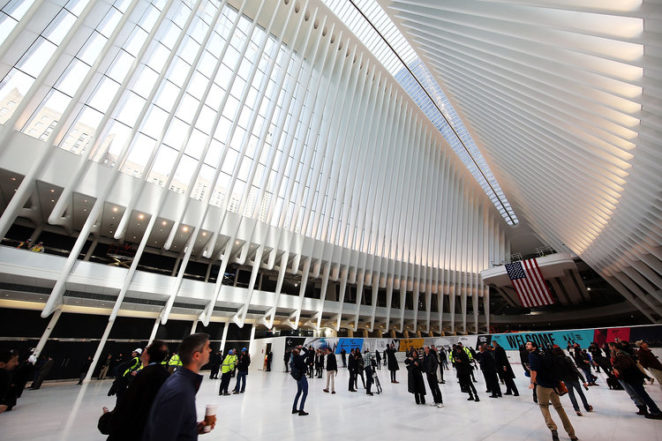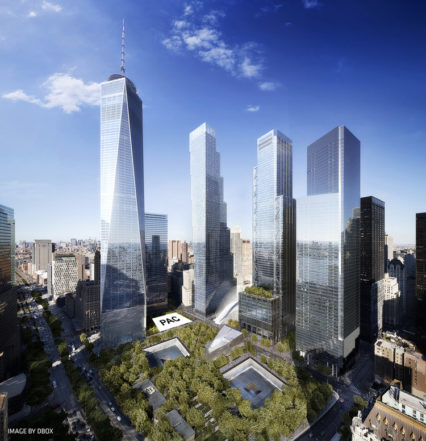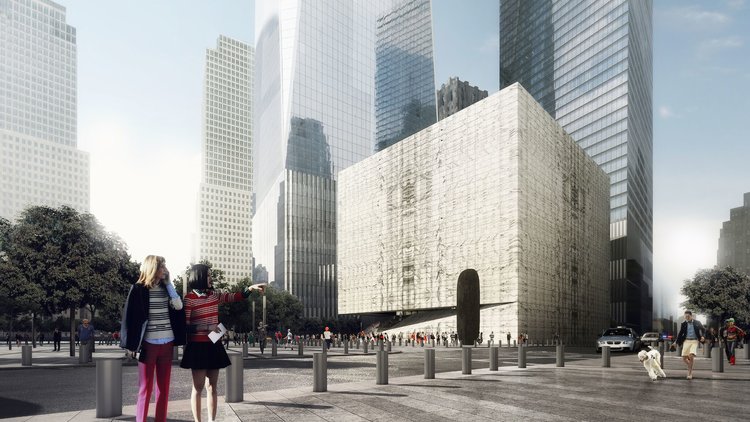
If you are reading this, odds are that you remember exactly where you were 15 years ago on that most horrible morning in 2001. I was in Washington DC, trying to arrange a construction tour of the newly renovated Pentagon. Luckily, I failed.
For those of you too young to have personal memory of that game-changing day, try this mental exercise:
- Pick out the tallest structure in your nearest city — for those of us in Chicago, that’s Willis Tower. Now imagine a jetliner full of passengers suddenly slamming into it, without warning, on a spectacularly beautiful morning… Close your eyes and then picture that building collapsing in a toxic cloud of dust that will billow outward for miles and be visible from space… for days.
That’s what lower Manhattan experienced 15 years ago today, and though the literal cloud eventually dissipated, the impact of that catastrophic event on our world still has not completely faded.
This month, though, even more evidence is mounting that the page has turned, heralding the final piece of Ground Zero’s grand $16-billion redevelopment, and the resurgence of high-rise construction across the U.S., belatedly joining the global trend that has already seen a decade’s worth of skyscrapers rise in Asia and Europe. On Sept. 7., free-spending Chinese developer Wanda Group visited Chicago to witness the groundbreaking of just one of its many U.S. investments, the 98-story, $1-billion Wanda Vista Tower, designed by the local duo of Studio Gang and bKL Architecture. Seattle’s Magnusson Klemencic Associates is its structural engineer.
“The post-9/11 fear of heights has all but vanished. Construction cranes are out in force. We are back to business as usual, which is to say that developers are more focused on the art of the deal than the art of architecture”
Noting the cloud-piercing comeback, Chicago Tribune architecture critic Blair Kamin says it is really driven by the broader draw of growing urban centers. He wrote last week: “The post-9/11 fear of heights has all but vanished. Construction cranes are out in force. We are back to business as usual, which is to say that developers are more focused on the art of the deal than the art of architecture.”
- Revisit our 2015 post, A Survivor’s Proposal: Make 9/11 a National Day of Discussion.
In the years since 9/11, Kamin also noted that Willis Tower, long the world record-holder for tallest, has now slipped to 11th on the global list. In fact, North America today only boasts one entry in the Top 10, New York’s 1,776-ft-tall One World Trade Center (1WTC), which opened in November of 2014.

Cradle of New York
Nearly two years later, Ground Zero’s remarkable rebirth continues. Earlier this year, architect Santiago Calatrava‘s stunningly beautiful (and expensive) Oculus train station opened to popular acclaim. And just last week, the design was unveiled for the last major part of Daniel Libeskind‘s multi-pronged master plan for the 16-acre World Trade Center site: a 90,000-sq-ft performing arts center, projected to cost $243 million, and open in 2020. NYC-based REX Architecture‘s “mystery box” design is “a constant source of surprise for theatergoers and the community,” said firm principal Joshua Prince-Ramus. “It is an immensely flexible canvas on which directors can script the patrons’ entire experience from their very entrance into the building.”
Site owner Silverstein Properties announced in late June that the long-stalled project would proceed, thanks to a $75-million gift from billionaire investor and former Carnegie Hall board chair Ronald O. Perelman, after whom the new facility will be named. The Perelman Center “will produce and premiere theater, dance, music, film, opera, and multidisciplinary works of performance art,” according to a press release issued Friday. Of note, the center’s board of directors also announced that it had elected Brooklyn native and legendary singer Barbra Streisand to be its chairperson.

“The performing arts connect us all and are such a vital part of New York City,” said Ms. Streisand. “The Perelman Center will vibrate with theater, music, dance, and film and bring life to this hallowed ground.” Added NY Gov. Andrew Cuomo, “Today the World Trade Center site stands as a monument to our nation’s ability to prevail in its darkest hour.”

According to REX, the Perelman Center will boast “a pioneering, highly adaptable performance palette that combines both multi-form and multi-processional flexibility.” It will hold three auditoria (499-, 250-, and 99-person) and a rehearsal room that can double as a fourth venue. “The auditoria can combine to form seven additional unique performance spaces for a total of eleven arrangements—including the rehearsal room venue—which can all adopt manifold stage-audience configurations.”

Roots of Resilience
Today, the word “resilience” is all the rage in the built environment, referencing climate change and green building and the laudable rise of “responsible” development that makes good business sense precisely because it adopts good environmental practices. This has been, and continues to be, an undeniably encouraging thread coursing through both our industry and international relations in recent years. So, 15 years after one of world history’s darkest days, there is light.
Not to be naive, of course, since so many enormous challenges remain, and violent clashes persist between states, peoples, and the forces of nature, both human and physical, that drive every action. But one can argue that the reason so many of us have hope today that our species is finally addressing the built environment’s most urgent problems can be traced back to the resilience we all found within ourselves collectively after 9/11. Despite all the many mistakes, large and small, made since that day, I would argue that the solidarity and strength that we rediscovered then — our national resilience — today is what gives us the confidence to know that we can prevail in the face of any foe.
_______________________________________________________________________________
For more on the latest project, visit: ThePerelman.org. For a broader update on the WTC site and how $30 billion in public-private investment is transforming Lower Manhattan, click here.

Discussion
Be the first to leave a comment.
You must be a member of the BuiltWorlds community to join the discussion.